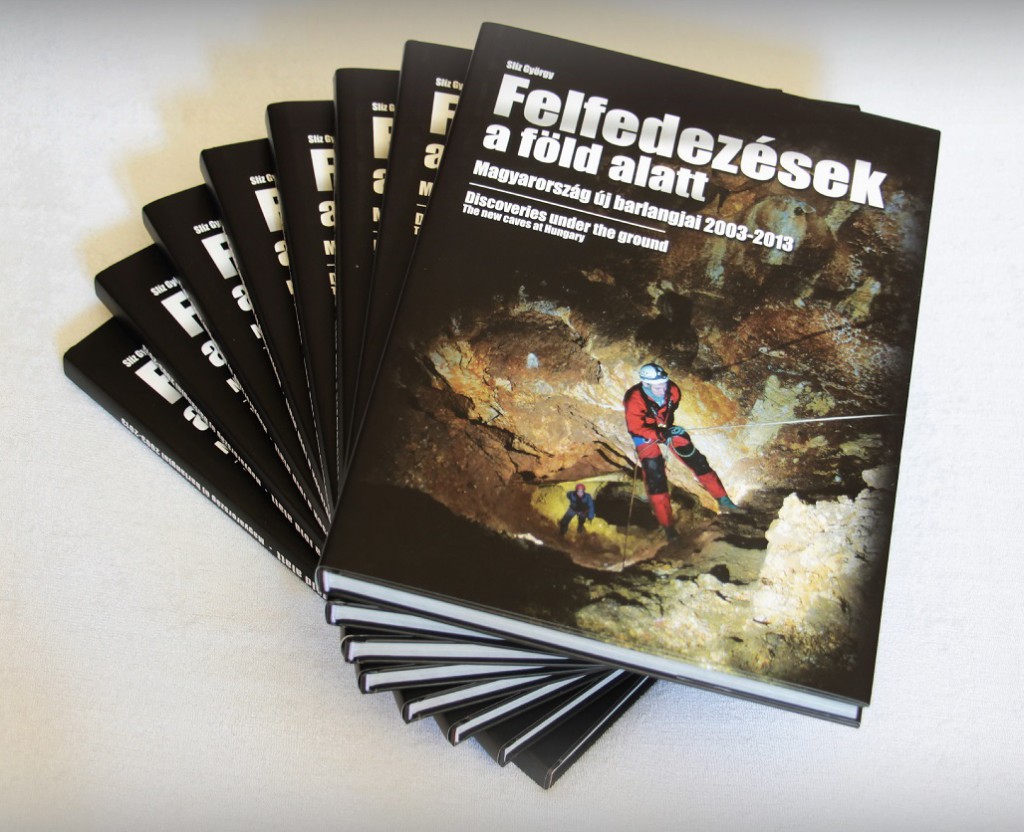In May 2014 local people in Bánk recognized the water of Jenő-creek have disappeared without swelling in the bottom of a new, approximately 10 diameter big breaking .Here you can see a video about it appeared on youtube a few days later.
The pit in the deepest point of the hole.Above it, on the top of rocks (gritstone) the riverbed continues.
To explain this breaking correctly, we have to know something about the local geological conditions.It’s important to emphasize: this riverbed dosen’t mean the karstwater level.At this karst covered with impermeable layers you can find an airspaced fissure system below the creek..
In this case the rivercreek goes along on a gritrock, below it you can find the karstic limestone in available deepness, so the water reach this limestone strata through the gritstone fissures and it can dissolve cave.
Gritstone is indissoluble in water so it dosen’t form a classic sinkhole entrance, but below it, at the top of the continuosly growing space the gritstone’s vault will suddenly collapse.Although this collapse was in the riverbed of Jenő-creek, it is only 30 meter far from the entrance of Lókos creek.We suppose the other creek’s water had also take part in cave’s dissolution under the collapse.
The reservoir of the two creek is approximately 60 square kilometer.It’s important because none of the sinkholes in Hungary has such a big reservoir.
Only a small fraction of this amount goes under and take part in dissolution now, but it could have been possible in the earlier eons that entire amount of water reached the karst.
Excluded this last factor have also leads to the dissolution of a bigger cave system.Waters sinking in this area through the fissuresystem of deep karst (during few thousand- or hundredthousand years) arrives at the thermals springs of Buda.
In this area too limestone forms a tropical karst (like the karst of Nógrád) which means limestone appaers as many cones on the surface before the filling up.So it’s possible at some points limestone almost reach the surface and at other points this strata lays in huge depth.
According to geoelectric measurements along sections which forms an angle with each other, at 10 meters under the surface an other rock can be found (probably limestone) at 30 meters deep an area with huge electric resistance (may be a cave) can be found.
The works of the exploration had started in October leaded by István Szenthe geologist, took part in few well experienced cave explorer and a couple of local and enthusiastic men.The local Government of Bánk are also supports the works.
If somebody would like to take part in work and he is phisically in good condition he is welcome!
The manually digged out,2×2 meter vast pit was carpenterned so precisely just like in an educational film.
So we don’t have to worry about flood or danger of slide.
As a result of 10 shift the pit is 6 meter deep counting
from the riverbed, and 3 meter deep counting from the botton of the collapse.
What it could be discovered here?We just have to think of the fireproof claymine’s caves, for example the Great Cavern which is 30 diameter big spherical hole in the
oligocene sandstone.It’s formed by a bigger limestone cavern was collapsed.
The goal is not only to discover the cave there but to understand more about how sinkholes and pits were formed out.


